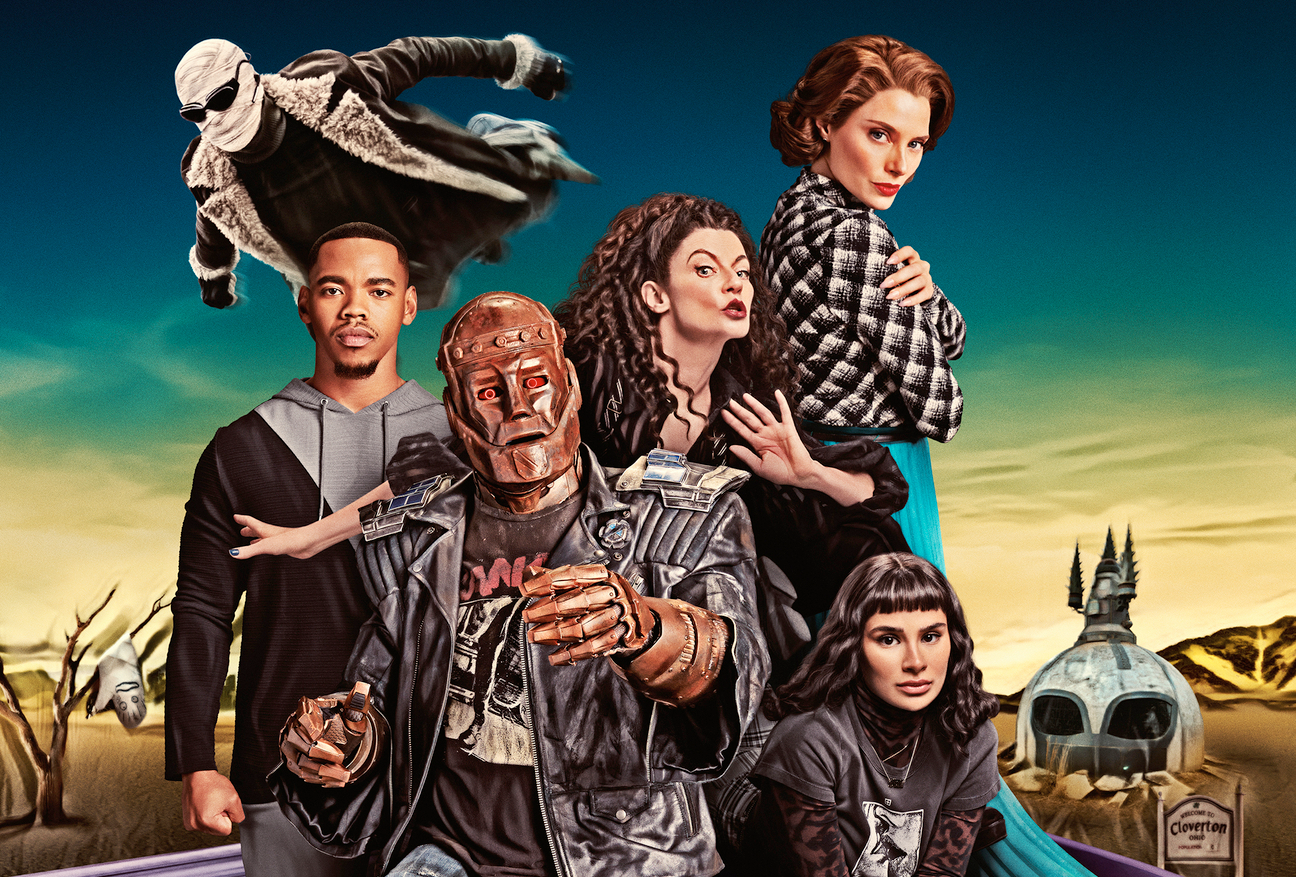Before there was Blue Beetle, there was Doom Patrol. If you want to see a television show that delicately balances the exploration of trauma, social justice issues, allyship, alternative families, and comedy, then I highly recommend Doom Patrol. Based on the DC comic characters, this reinterpretation is for mature audiences who are still in touch with their inner child. Some spoilers ahead, so tread lightly.
A lack of diversity in film and television not only fails to represent various groups and identities, it also means losing out on the representation of how various groups actually intersect and can be allies to each other on a daily basis. One of the first things I noticed about Doom Patrol is that every character has a complex backstory, varying levels of privilege, and a strong internal struggle that drives them to be better. But despite their superpowers and gifts, every member of the team makes various blunders, gives into temptations, gives up, and faces the consequences of their bad decisions.
It’s hard not to put my main focus on Diane Guerrero’s portrayal as Jane/Kay Challis, a character who dealt with child abuse and dissociated as a result of her past trauma. As a Latina, it’s been fun to see Guerrero portray hilarious characters with much deeper backstories than we expect. This was the case with her role as Maritza Ramos in Orange is the New Black, and now in Doom Patrol. The show finds sensitive ways to portray her character’s story, superpowers, and struggles while still showing us Jane’s loving and giving heart.

Joivan Wade’s portrayal of Vic “Cyborg” Stone also stands out. Wade portrays a sensitive version of Cyborg who struggles to accept himself in new tech, has fractured and complicated relationships, and still manages to step up to save the world. He arrives in Cloverton, Ohio from Detroit because he wanted to help the Doom Patrol during season 1, and ended up staying.
The show’s side characters, apocalyptic scenarios, relationship with death, and use of the fantastic make use of magical realism. Talking to sex ghosts, a sentient street, and a robot with only a brain as its sole human part are just par for the course in Doom Patrol.
The show also uses made-up governmental bureaus as its villains. Those of us who’ve lived through policing in our neighborhoods, have been raised in the United States due to US intervention in our home countries, and continue to be targets of powerful institutions will recognize the job of fictitious authorities such as the Bureau of Normalcy.

Despite being a chosen family, the Doom Patrol doesn’t forget the characters’ relationships with their birth families. We get to see how some of them choose to let go of those who won’t accept them in Larry Trainor/Negative Man. Cliff Steele shows us what it’s like to repair, hold oneself accountable, and accept boundaries. Rita Farr’s character explores the complicated nuances between mother and daughter. Themes of fatherhood also come to mind, especially when we see interactions between Vic and Silas Stone.
The show also handles LGBTQ+ themes and struggles with both humor and nuance. Rather than putting the burden on one character, as many shows have done in the past, Doom Patrol centers many LGBTQ+ voices. I also credit Doom Patrol for showing us alternatives to toxic masculinity. It’s not that there are no misogynist characters in the show, but that many male characters lean into their feelings and sensitivity to push back against harmful narratives.
Though the comedic tone of how the characters handle their issues may seem absurd, we have to be honest: humans truly do use humor to cope with difficult issues or risk succumbing to full-on apathy and despair. The issues we’ve been dealing with for the past several years now show just how important humor is. Just look through social media for jokes on environmental crises, the ongoing pandemic, and all matters of human experiences. Maybe there’s a little bit of the Doom Patrol in all of us during tough moments.
All four seasons of Doom Patrol are available to stream on Max.

